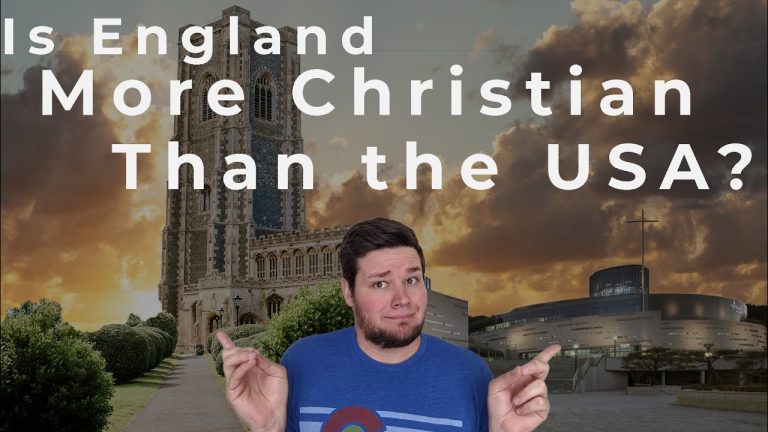The landscape of Christianity in the United States is both vibrant and multifaceted. The sheer number of Christian churches across the nation evokes curiosity, prompting questions about the evolution of faith communities, their varying denominations, and their societal impacts. As we delve into this intriguing topic, we will uncover statistical insights while also examining the implications of such a diverse array of religious institutions.
To commence, it is essential to establish a foundational understanding of the Christian demographic in the United States. Recent estimates indicate that there are approximately 380,000 to 450,000 Christian churches nationwide. This staggering figure becomes even more pronounced when juxtaposed with the country’s population, which hovers around 331 million. Presently, nearly 70% of Americans identify as Christian, suggesting a profound influence of faith on both individual lives and societal norms.
The spectrum of Christian churches in the U.S. is extensive, encapsulating a wide array of denominations that embody different theological interpretations and worship practices. Among these, the three largest branches—Roman Catholicism, Protestantism, and Eastern Orthodoxy—are particularly noteworthy. Each branch not only contributes to the total number of churches but also shapes the religious landscape through its unique traditions and teachings.
The Roman Catholic Church stands as the single largest denomination, with over 17,000 parishes across the country. This widespread presence underscores the enduring significance of Catholicism in American life. The Protestant realm, however, is where the situation becomes notably complex. It includes an extensive variety of denominations ranging from Baptists to Methodists, Lutherans to Pentecostals. Statistical analysis reveals that roughly 33,000 distinct denominations exist, each contributing to the greater total of Protestant churches. This implosion of variety highlights not only theological differences but also diverse cultural practices and community outreach initiatives.
The sheer volume of churches prompts a deeper inquiry about their roles within society. Historically, churches have functioned as hubs for community and social interaction. In many neighborhoods, they serve not just as spiritual sanctuaries, but also as centers of support providing charitable services, educational programs, and cultural enrichment. In this context, the church can be perceived as a microcosm of broader societal values, reflecting both the collective strengths and weaknesses of its surrounding community.
Moreover, the statistics surrounding church attendance provide additional layers of insight. Despite the high number of churches, regular attendance has seen a gradual decline over recent decades. Reports indicate that only about 20% of Americans attend church weekly. This decline can be attributed to a multitude of factors, including the rise of secularism, shifting societal values, and the increasing prevalence of alternative forms of spirituality. As individuals increasingly seek meaning outside traditional frameworks, the role of the church may be shifting—an evolution that prompts churches to rethink their approaches to worship and community engagement.
Within this dynamic framework, it is also crucial to examine the geographical distribution of these churches. States with large urban centers, such as California, Texas, and New York, naturally host a greater concentration of churches. However, rural areas also exhibit resilience in maintaining vibrant faith communities despite their smaller populations. In fact, small-town churches play a pivotal role in fostering a sense of belonging and identity among residents. This geographical dichotomy presents a fascinating study in contrasts—a juxtaposition of modernity and tradition, urban development and rural vibrancy.
Furthermore, the increasing diversity within Christianity in America warrants discussion. The rise of non-denominational churches, often characterized by their contemporary worship styles and flexible doctrinal teachings, illustrates a significant shift in how many individuals engage with spirituality. In recent years, the non-denominational movement has proliferated, giving rise to churches that emphasize inclusivity and community, sometimes merging elements from multiple traditions to create a unique congregational identity. This phenomenon invites fresh perspectives on what it means to be part of the Christian faith in modern society, suggesting that the church of the future may well look vastly different from that of the past.
Apart from numerical and demographic insights, an exploration of the spiritual implications surrounding these churches becomes imperative. The abundance of Christian churches in the U.S. signifies not only religious fervor but also a profound desire for connection, understanding, and hope. Each church serves as a beacon for those seeking solace amid turmoil, offering teachings that emphasize love, forgiveness, and community—principles that resonate deeply within the Christian narrative. Yet, with diversity comes complexity; theological differences can sometimes lead to division, raising questions about unity within the body of Christ.
Ultimately, the dialogue surrounding the quantity and diversity of Christian churches in America serves as a microcosm of the broader questions facing religion today. It compels us to ponder how faith evolves in response to cultural changes, how communities navigate the challenges of modern life, and how congregants find solace in an increasingly complex world. In this context, exploring the interplay between statistics and spirituality might yield not just surprising data about the number of churches, but also a deeper understanding of faith, community, and the human experience as a whole.
In conclusion, as we reflect on the vast number of Christian churches in the United States—each one representing unique expressions of faith—we are reminded of the compelling stories that reside within these walls. The journey through statistics reveals more than numerical data; it invites us to witness the resilience of human spirit and the transformative power of faith in action.



